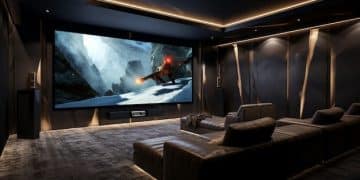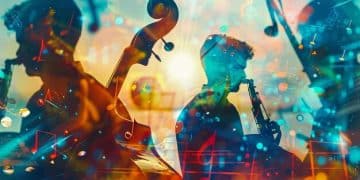The Evolution of Movie Soundtracks: From Vinyl to Streaming in 50 Years
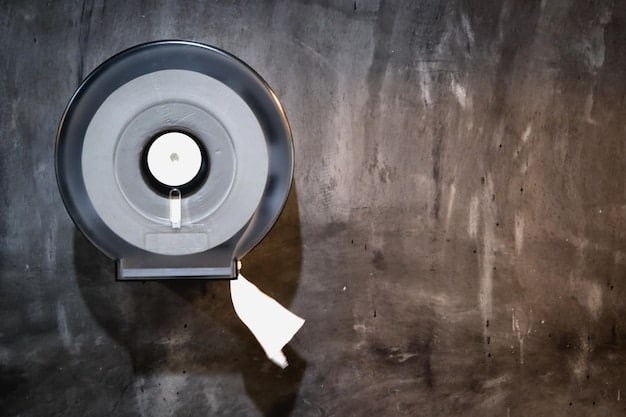
The Evolution of Movie Soundtracks: From Vinyl to Streaming in 50 Years explores the technological advancements and cultural shifts that have transformed how music is created, distributed, and experienced in cinema, impacting both the film industry and music industry
The journey of movie soundtracks over the past 50 years is a fascinating exploration of technological innovation and cultural evolution. From the warm crackle of vinyl to the pristine clarity of digital streaming, the evolution of movie soundtracks: from vinyl to streaming in 50 years has profoundly impacted how we experience cinema.
The Vinyl Era: Setting the Stage
The early 1970s marked the peak of the vinyl era, where movie soundtracks were tangible artifacts, carefully curated collections of songs and scores. These vinyl records were more than just audio; they were pieces of art that captured the essence of a film.
Vinyl soundtracks allowed audiences to relive their favorite cinematic moments in a unique way, experiencing the emotions and story through music. The physicality of vinyl, from the album art to the act of placing the needle on the record, created an immersive and deeply personal connection to the film.
The Impact of Iconic Composers
During this era, composers like John Williams and Ennio Morricone rose to prominence, crafting unforgettable scores that became synonymous with their respective films. Their work set a new standard for cinematic music, blending classical orchestration with modern sensibilities.
The soundtracks of films such as “Star Wars” and “The Good, the Bad and the Ugly” became cultural touchstones, demonstrating the power of music to elevate storytelling and create lasting memories.
Vinyl’s Unique Listening Experience
Vinyl offered a distinctive listening experience characterized by warmth, depth, and a tactile connection to the music. The format’s limitations, such as occasional surface noise, added to its charm and authenticity, creating a sense of intimacy with the recording.
- The warmth of analog sound made instruments sound richer.
- The tactile experience of handling the record enhanced engagement.
- Album art provided additional context and visual appeal.
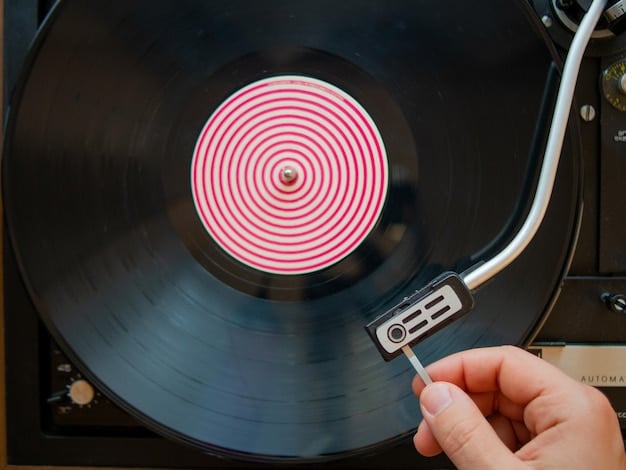
The vinyl era laid a strong foundation for the evolution of movie soundtracks, establishing the importance of music in cinematic storytelling. It offered a tangible and immersive experience that continues to resonate with music lovers today.
The Cassette and CD Transition: A Shift in Format
The introduction of cassettes and CDs revolutionized the way movie soundtracks were consumed. These formats offered greater convenience and portability, marking a significant shift away from vinyl’s dominance.
Cassettes made soundtracks more accessible for everyday listening, while CDs provided improved audio quality and durability, paving the way for digital music.
The Rise of the Mixtape
Cassettes played a pivotal role in the rise of the mixtape, allowing fans to create personalized compilations of their favorite movie songs. This practice fostered a deeper engagement with soundtracks, transforming them into a medium for self-expression and social sharing.
- Mixtapes personalized the listening experience and reflected individual tastes.
- They were easy to share, contributing to the spread of musical trends.
- Cassettes were more portable than vinyl, making music accessible on the go.
CDs: The Digital Dawn
CDs brought a new level of clarity to movie soundtracks, eliminating the surface noise and limitations of analog formats. The digital sound of CDs provided a cleaner, more pristine listening experience that appealed to audiophiles and casual listeners alike.
The improved durability of CDs also made them a practical choice for long-term preservation, ensuring that soundtracks could be enjoyed for years to come.
The cassette and CD transition era marked a pivotal moment in the history of movie soundtracks, paving the way for digital music and the convenience of modern streaming services. These formats not only changed how we listened to soundtracks but also broadened their reach and accessibility.
The Digital Revolution: MP3s and Early Downloads
The late 1990s and early 2000s witnessed the digital revolution, with MP3s and early download services transforming the landscape of movie soundtrack consumption. This era brought unprecedented convenience and accessibility, but also presented new challenges for the music industry.
The shift to digital formats allowed fans to discover and enjoy movie soundtracks in ways that were previously unimaginable, shaping the future of cinematic music.
The Impact of MP3s
MP3s revolutionized music sharing and consumption, making it easier than ever to access and distribute movie soundtracks. The ability to compress audio files without significant loss of quality opened up new possibilities for music discovery and portability.
Early Download Services
Services like Napster and iTunes paved the way for legal and illegal music downloads, transforming the way people acquired and listened to movie soundtracks. These platforms offered vast catalogs of music, providing users with a wealth of options at their fingertips.
- Digital downloads offered instant access to a wide range of soundtracks.
- MP3s enabled easy sharing of music files.
- Legal download services provided a convenient alternative to piracy.
The Streaming Era: Accessibility and Discovery
The advent of streaming services such as Spotify and Apple Music has ushered in a new era of accessibility and discovery for movie soundtracks. These platforms offer vast catalogs of music, allowing listeners to explore soundtracks from different genres, eras, and cultures.
Streaming has also changed the economics of the music industry, providing new revenue streams for artists and rights holders, and transforming how consumers interact with cinematic music.
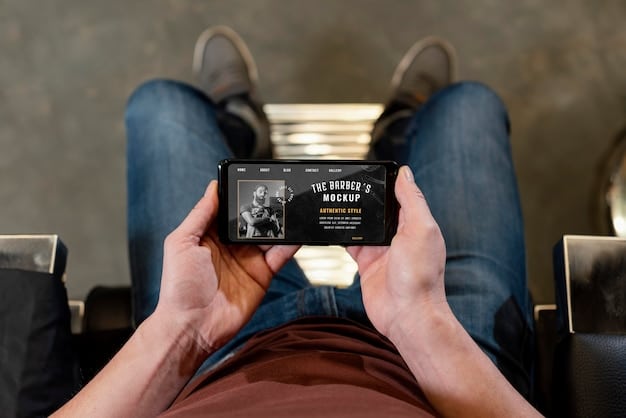
The Rise of Streaming Playlists
Streaming playlists have become a popular way for fans to discover and curate movie soundtracks. These playlists, often created by users or music professionals, group soundtracks by genre, theme, or mood, guiding listeners through a curated sonic journey.
Personalized Recommendations
Streaming algorithms analyze listening habits and preferences to provide personalized soundtrack recommendations. This feature helps listeners discover new and obscure soundtracks, expanding their musical horizons and fostering a deeper appreciation for cinematic music.
- Streaming playlists curate listening experiences.
- Algorithms recommend soundtracks based on personal preferences.
- Accessibility broadens the audience for movie soundtracks.
The streaming era has made movie soundtracks more accessible and easier to discover than ever before. These platforms offer vast catalogs of music, personalized recommendations, and curated playlists, transforming how people experience cinema.
The Composer’s Perspective: Adapting to Change
The evolution of movie soundtracks has profoundly impacted composers, forcing them to adapt their creative processes and business models to new technologies and consumption patterns. From writing for orchestras to creating digital scores, composers have embraced change while maintaining their artistic integrity.
The rise of streaming has also created new opportunities for composers to reach wider audiences and monetize their work, ensuring that cinematic music continues to thrive in the digital age.
New tools for creativity
Adapting to this ever-changing environment has its challenges, as technology keeps improving, composers need to learn the new tools necessary to keep up, which can lead to some incredible new sounds within the music.
Composers getting paid
In the past composers were paid fairly well for composing a musical soundtrack to a major movie, but as streaming services have come into effect, this has hurt the compensation of these artists of musical scores.
Adapting to the changing technologies and platforms has allowed for composers to have a far wider reach when it comes to their music being heard. They also must adapt with the payment methods, as there is less money to go around through streaming services.
The Future of Movie Soundtracks: Immersive Experiences
Looking ahead, the future of movie soundtracks promises to be even more immersive and interactive, with new technologies such as virtual reality (VR) and augmented reality (AR) blurring the lines between cinema and music.
These innovations will allow audiences to experience movie soundtracks in entirely new ways, creating a deeper and more meaningful connection to the stories and emotions on screen.
VR and AR Integration
VR and AR technologies have the potential to revolutionize how movie soundtracks are experienced, allowing audiences to step inside the film and interact with the music in real time. Imagine walking through the bustling streets of Gotham City, with the iconic soundtrack of “The Dark Knight” enveloping you. This level of immersion could transform the way we connect with cinema.
Interactive Music Experiences
Interactive music experiences will enable audiences to shape the soundtrack to their liking, changing the mood, tempo, and instrumentation to match their preferences. This personalized approach will create a deeper sense of ownership and engagement, transforming the way we perceive film music.
- VR and AR will create immersive listening environments.
- Interactive music experiences enable personalized soundscapes.
- Technology will continue to drive innovation in movie soundtracks.
| Key Point | Brief Description |
|---|---|
| 🎵 Vinyl Era | Warm, tangible listening; iconic composers like John Williams. |
| 🎧 Cassette/CD Transition | Greater convenience, mixtapes, improved audio clarity. |
| 📱 Digital Revolution | MP3s, early downloads; unprecedented access, piracy concerns. |
| 🌐 Streaming Era | Vast catalogs, playlists, personalized recommendations, new revenue. |
FAQ
▼
Vinyl records made soundtracks tangible, creating an immersive, personal connection with art and music that captured the film’s essence, allowing audiences to vividly relive cinematic moments.
▼
Cassettes popularized mixtapes, enabling fans to compile favorite movie tracks, promoting self-expression and social sharing of soundtracks, while offering more portability than vinyl.
▼
CDs delivered crisper digital sound by eliminating analog format noise while enhancing durability for long-term soundtrack preservation and enjoyment, appealing to both audiophiles and casual listeners.
▼
Streaming services allow vast soundtrack access with algorithms that recommend by preference, curated playlists, and opportunities for lesser-known soundtracks, broadening audiences’ musical horizons.
▼
VR/AR can revolutionize experiences to enhance film connections and create interactive personalized musical soundscapes that allow for engagement and deeper involvement with cinema’s emotional storytelling.
Conclusion
From the tactile pleasure of vinyl to the boundless libraries of streaming services, the evolution of movie soundtracks has been a remarkable journey fueled by technology and shaped by our desire to connect with the stories and emotions on screen. As technology continues to advance, allowing for more customizable experiences, we must appreciate the history and the evolution of it.

